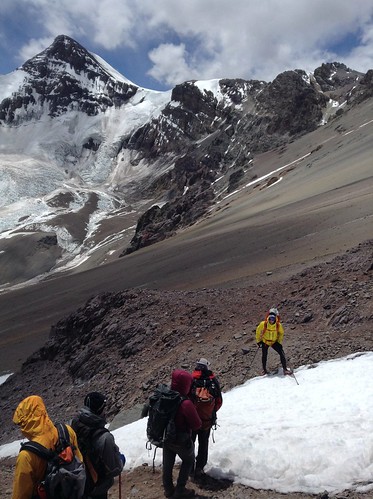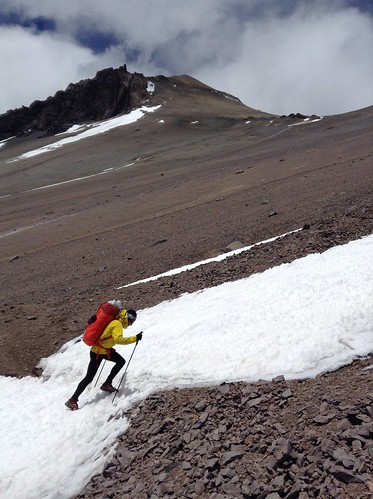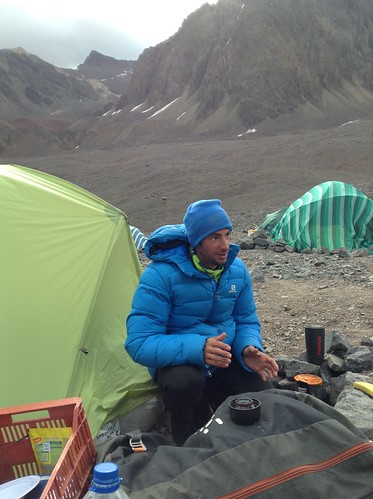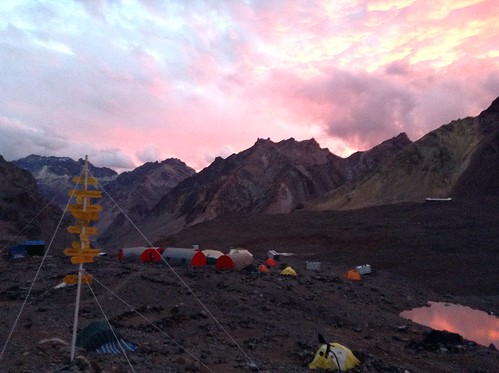The New Yorker yesterday published my story about the mountain runner Kílian Jornet Burgada, who I met in December while he was setting a new speed ascent-descent on Aconcagua, the tallest summit in the Americas.
Kílian was previously profiled in The New York Times Magazine and Outside, among many places, for his jaw-dropping feats of endurance and nerve in running over the world’s biggest mountains in record-fast times. He and the filmmaker Sébastien Montaz-Rosset have made several beautiful and inspiring documentaries about their adventures in the Alps, and more films are in the works for Denali, Aconcagua, and Everest. In the below photo, Kílian is hiking to camp 2 during a training session Dec. 14 (the reason why he couldn’t come to my birthday party!).

Truth be told, I had never heard of Kílian before coming to Aconcagua, and I myself had only decided to come to Aconcagua about a week before my two-week expedition began (everyone else in my group had booked 6-12 months in advance). Only on the drive to the mountain did I overhear our guide talking about an amazing Spanish mountain runner who would be on Aconcagua, at the same time as us, to set a new F.K.T. (fastest known time) of running up and down the 22,831-foot-tall mountain.


And then at base camp, just a few paces away from my own tent, Kílian pitched a tent with his girlfriend, Emelie Forsberg, who is one of the fastest woman “sky runners” alive today. We were basically all camping together. I passed them each time I walked to a rickety tin outhouse that was tethered to the ground by four metal wires. (One night the wind ripped the outhouse door from its metal bolts—the door was reattached, but this remained an ongoing concern for those sitting inside.) Forsberg told me the setup was “luxury” compared to a recent trip in the Himalaya.
Below is a photo I took of Kilian prepping tea outside his tent, and then of he and Forsberg saying “bye” to us when we left base camp for the summit push.


Below is a photo from the entrance of Aconcagua National Park, where Kílian began his 38-mile roundtrip-run to the white-capped summit far off in the distance.

Below is a photo of base camp where we all lived for a few days:

Below that is a photo of a worker reattaching the aforementioned outhouse door:

Below is a short video clip of Kílian speaking with me on Dec. 15, after he’d run down from the summit in about 90 minutes (which normally takes eight hours hiking):
It was somewhat random that my story ended up on the website of The New Yorker, which was just because online editor already knew of Jornet and said he was fascinated by the guy. (Related: This was my first piece ever for The New Yorker, and their editing process was fantastic. The story first passed through a patient editor, then a very meticulous fact-checker (who inspected each of the story’s 70-odd annotations and reviewed all my field notes), then a copy-editor, and then back to the first editor. An example of the kind of back-and-forth we had: I said I wasn’t sure if the name of Jay Z, who I mention in the story, needed a hyphen (like “Jay-Z”) and the editor responded that the rapper had dropped the hyphen in recent years. Who knows that kind of thing of the top of their head?!)
Lastly, below is a photo of my group on Dec. 16 when we started our four-day push to the summit. Kílian is far left in the blue puffy jacket, and I’m far right holding up the trekking pole:


Pingback: Feb 2015: On Aconcagua, the little climber that could | Stephen Q. Kurczy
Pingback: Kilian Jornet Conquers Everest (momentarily) | Stephen Q. Kurczy